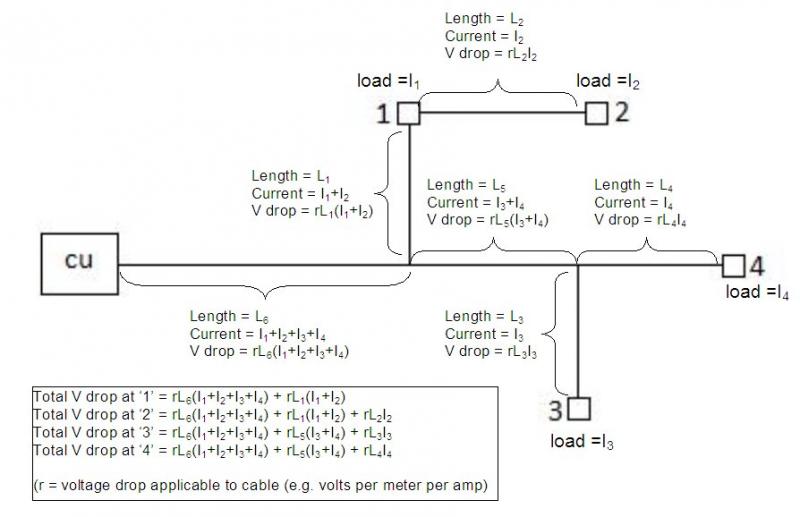As you say, there nothing much more obvious than that (although I guess there was a time when people regarded it as less than obvious, since Mr Kirchoff felt in necessary to state his 'Law') - but that's not the point. As I've said repeatedly, if one knows the currents being drawn at each socket, then working out the voltage drop experienced at each socket is very trivial - which I presume is the point you're making.Right, you just need to remember that the first leg of the circuit carries the sum of all the currents, some current flows in the branch to the first socket so is subtracted from the total for the next leg, and so on. Just draw it out and the current in each conductor will be obvious.
The question we've been discussing is much more general than that. There is obviously an infinte number of ways in which loads/current can be distributed bewteen the sockets on a circuit within the limits imposed by the total available current ('design current' and/or In of OPD) and the maximum permissible load on each outlet. The question being asked is what is the maximum VD seen (at any socket) with any one of that infinite number of situations.
From the very start, my intuition (which maybe you would call 'the obvious') told me that (assuming same CSA cable throughout) the maximum possible VD will be seen, at the socket furthest from the CU, with loads arranged so that the furthest (in terms of total cable path length) socket draws the maximum permissible current for that outlet, the second-furthest draws as much as permitted of the available remainder, the third-furthest as much as possible of anything left ... etc.etc.
Maybe your mind is such that it is 'obvious' to you that my intuitive view is always correct. However, I have to say that when I initially tried to formally prove the general case ('convince myself') I found it less than obvious/trivial, particularly given that the 'general proof' has to encompass complex circuits with multi-level branching. I think I now have 'convinced myself', but do you really believe that the answer (in terms of an actual 'proof') is all that 'obvious'?
Essentially agreed. I've used nothing more than Kirchoff's Law (implicitly) and Ohm's Law - i.e. essentially looking at things 'from basic principles'. It was Eric who introduced the more esoteric mathematical concepts and discussions, which then flew off at a tangent!You don't actually need anybodies theorem, or any understanding of vectors quantities and imaginary numbers etc.
If you want to make the exercise more challenging (and maybe even get some vector operators involved!) you could consider the situation in which the loads are each allowed to have any power factor
Kind Regards, John


